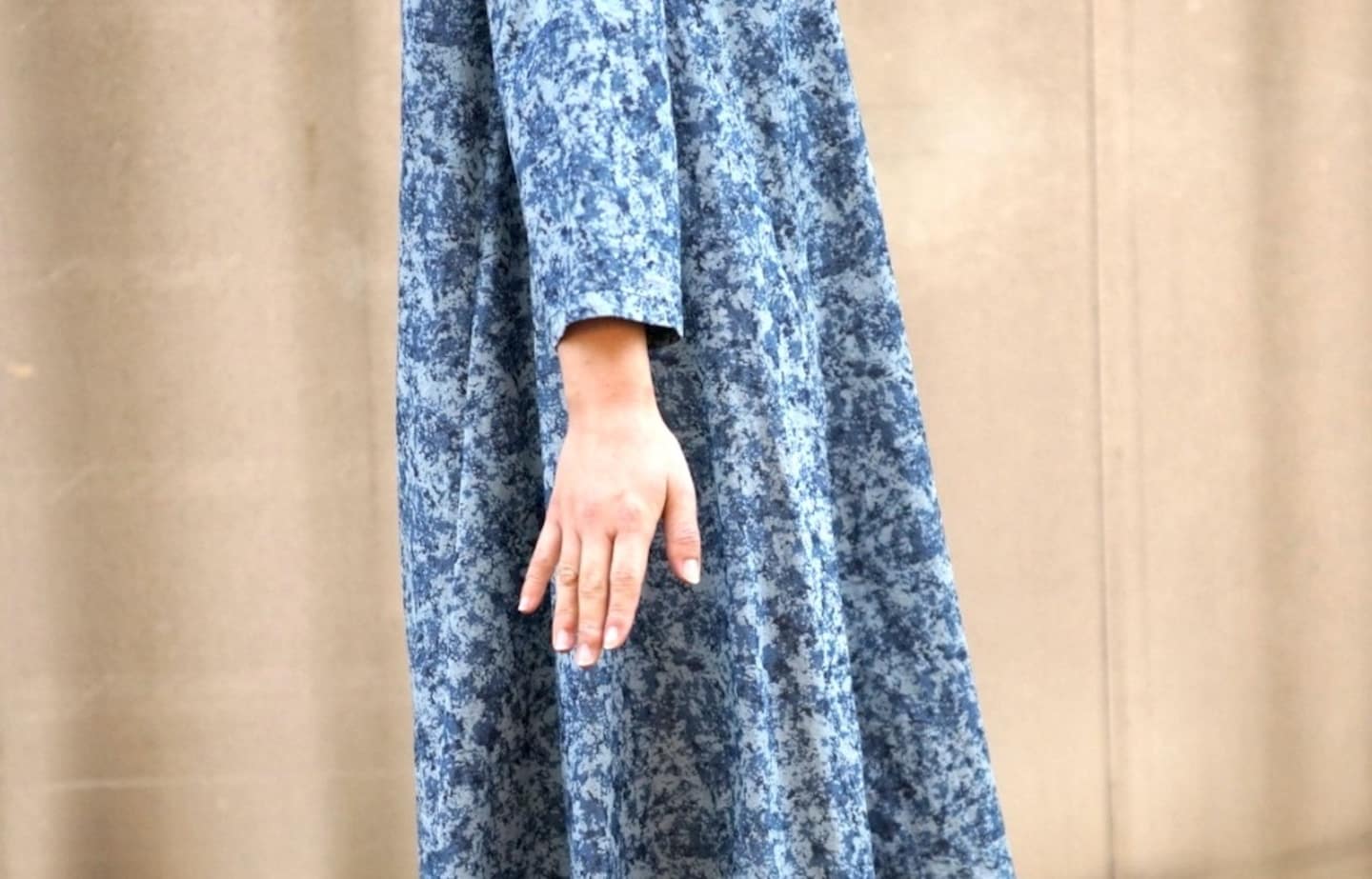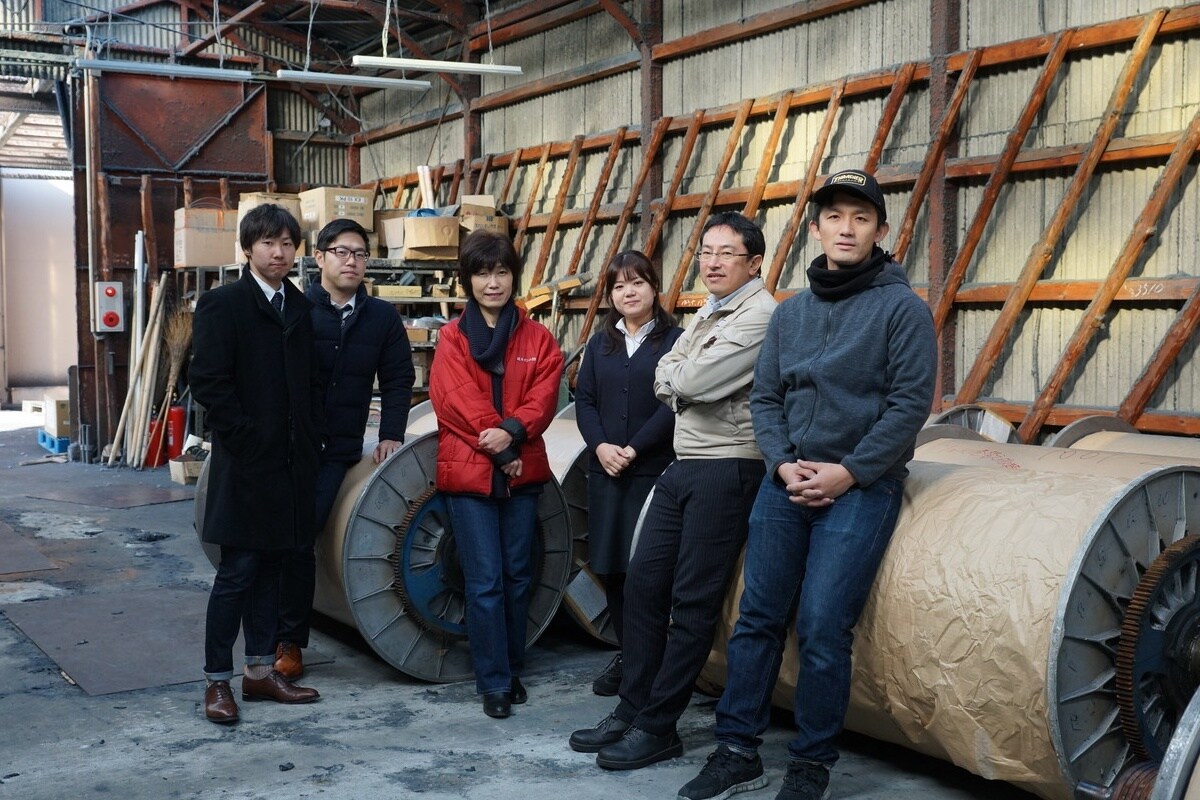Taking Denim Beyond the Jean Jacket
A stroll through narrow alleyways in Fukuyama, Hiroshima Prefecture, will lead you to the city’s old Tomonoura port, which had its heyday in the Edo Period (1603–1867). Bounded by the landmasses of Honshu, Shikoku and Kyushu islands, the waters of the Seto Inland Sea here are a smooth calm blue.
By Local Creators' Market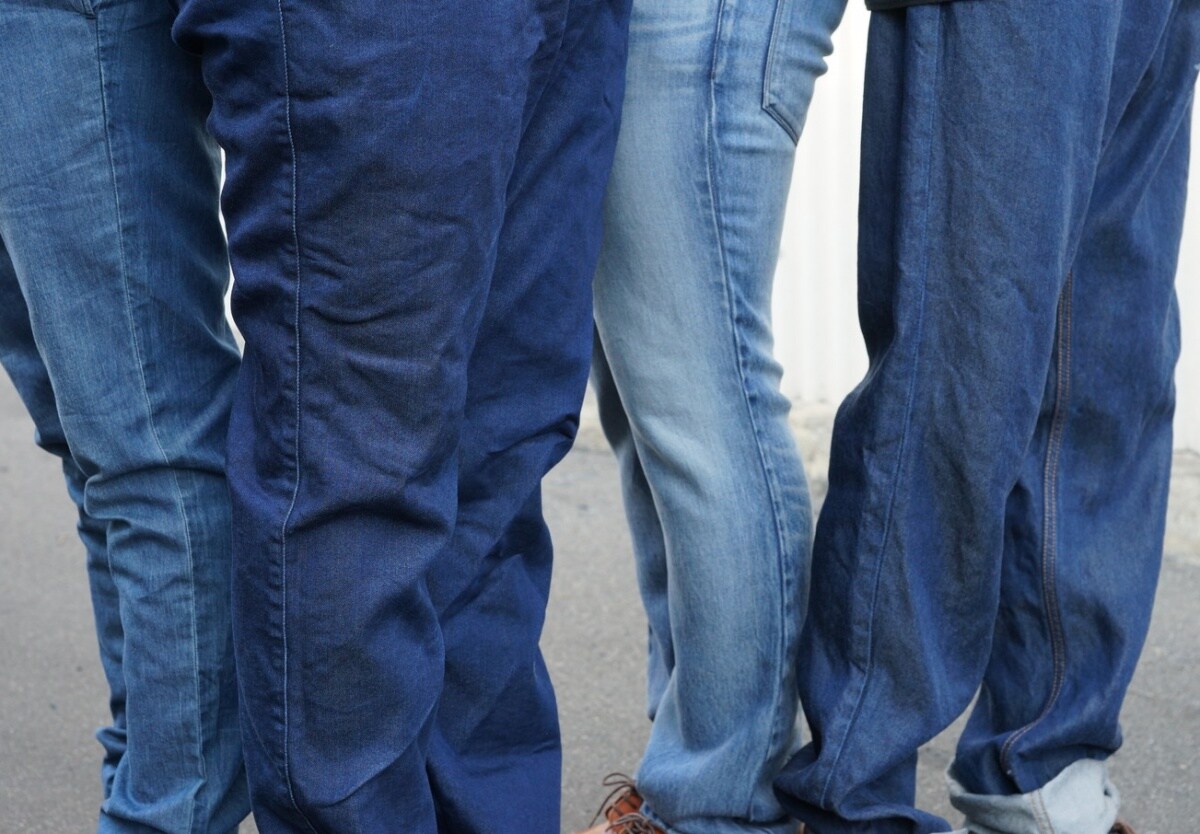
Situated side by side in this region are Okayama and Hiroshima Prefectures, the country’s top two denim producers. Together they manufacture 90 percent of the nation’s total. Fukuyama alone accounts for 50 percent.
Characterized by mild weather and little rainfall, the region has a long history as a settlement. Mountains rise close beyond the shores of the sea. As soil salinity is high the land is not suited to rice cultivation. Cotton, however, is sufficiently salt-tolerant. It was promoted as a crop back in the Edo Period by the head of the feudal domain, who introduced textile production as well. Indigo could be grown in the mountainous areas, and dyeing techniques naturally evolved from there. In time the resist-dyed ikat pattern known as Bingo-kasuri emerged as a local specialty, featuring designs resembling the hash mark (#).
Cotton thread production, dyeing, weaving: such is the background underlying Fukuyama’s ongoing success as a denim production center. Today many different technologies are employed here to meet the demand for high-quality denim fabric in large and small lots.
Sakamoto Denim
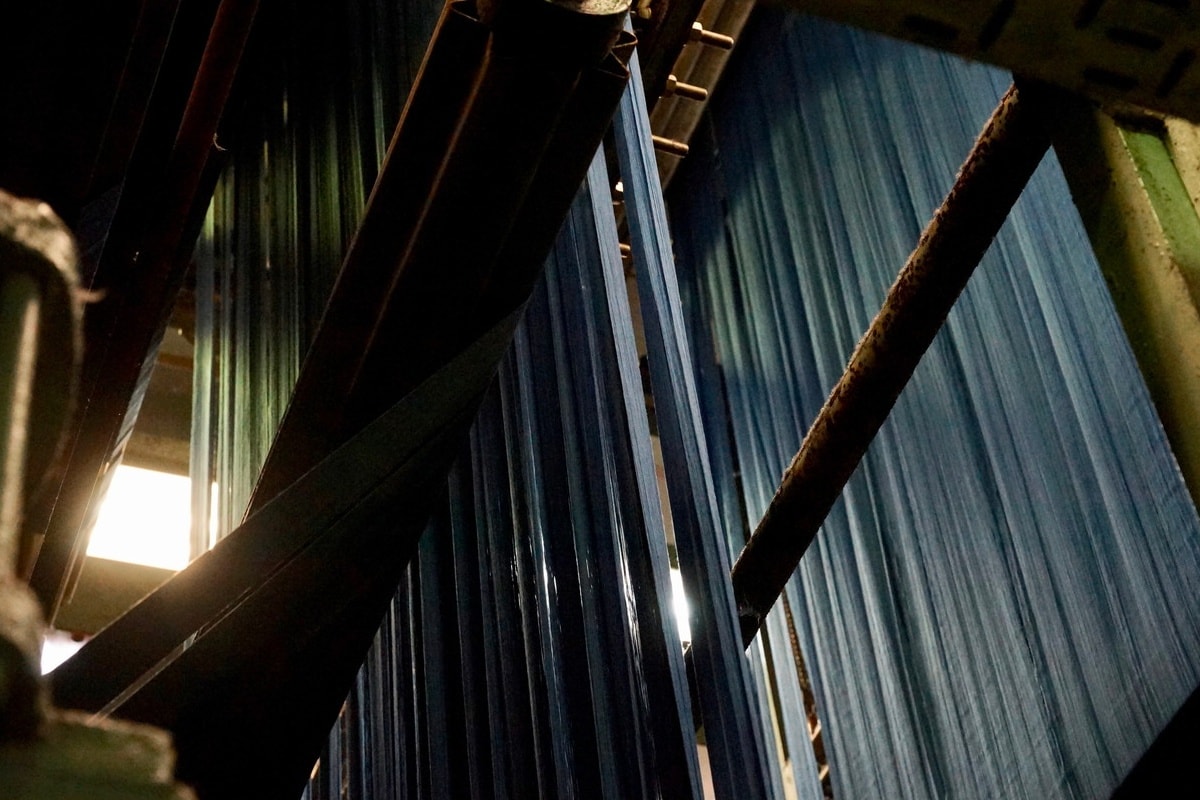
Three companies are especially notable for their love of denim, and for the technical skills they’ve mastered to keep pushing the design envelope. One is Sakamoto Denim, established in 1892, the first in Japan to mechanize the rope-dyeing method.
In rope-dyeing, warp yarns are literally twisted into ropes prior to being dipped in the dye bath. As a result, the core of the threads remains an undyed white. Once woven and washed and worn, over time the colored surface wears away, enhancing the distinctive appeal of faded denim.
Besides innovating a way of mechanizing this dyeing process, Sakamoto also developed the first continuous dyeing machine in Japan. The company is a driving force of Japan’s indigo-dyeing industry; indigo textiles account for 90 percent of its business.
Its greatest strength is its wide range of denim colors. Even “indigo” itself comes in a multitude of hues—the warp threads may be dark indigo, super-dark indigo, natural-plant indigo, greenish indigo and so on. The company can provide exactly the color a client requires.
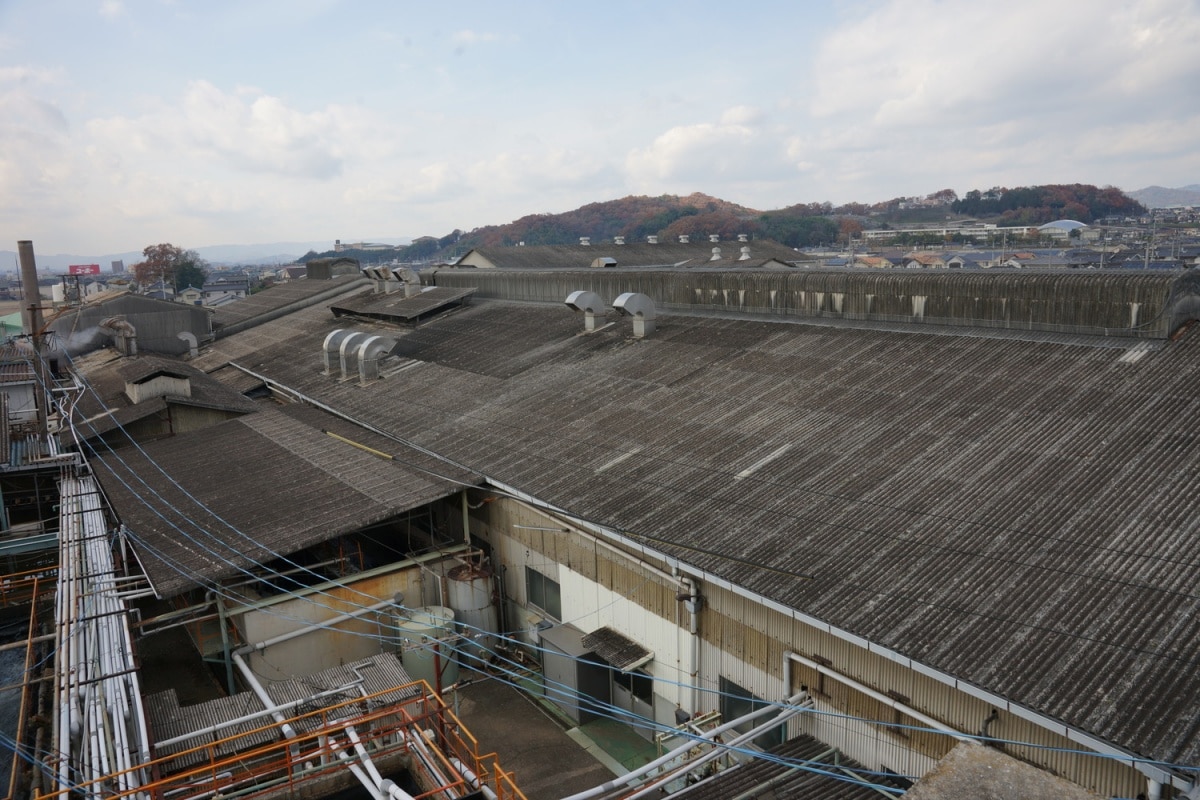
Sakamoto is also a strong presence in the environmentally sustainable practices that support Fukuyama denim. The company uses electrolyzed water to dye at room temperature, and was one of the first to recycle water through activated sludge processing—doing what it can to reduce its burden on the environment.
Sanyo Senko
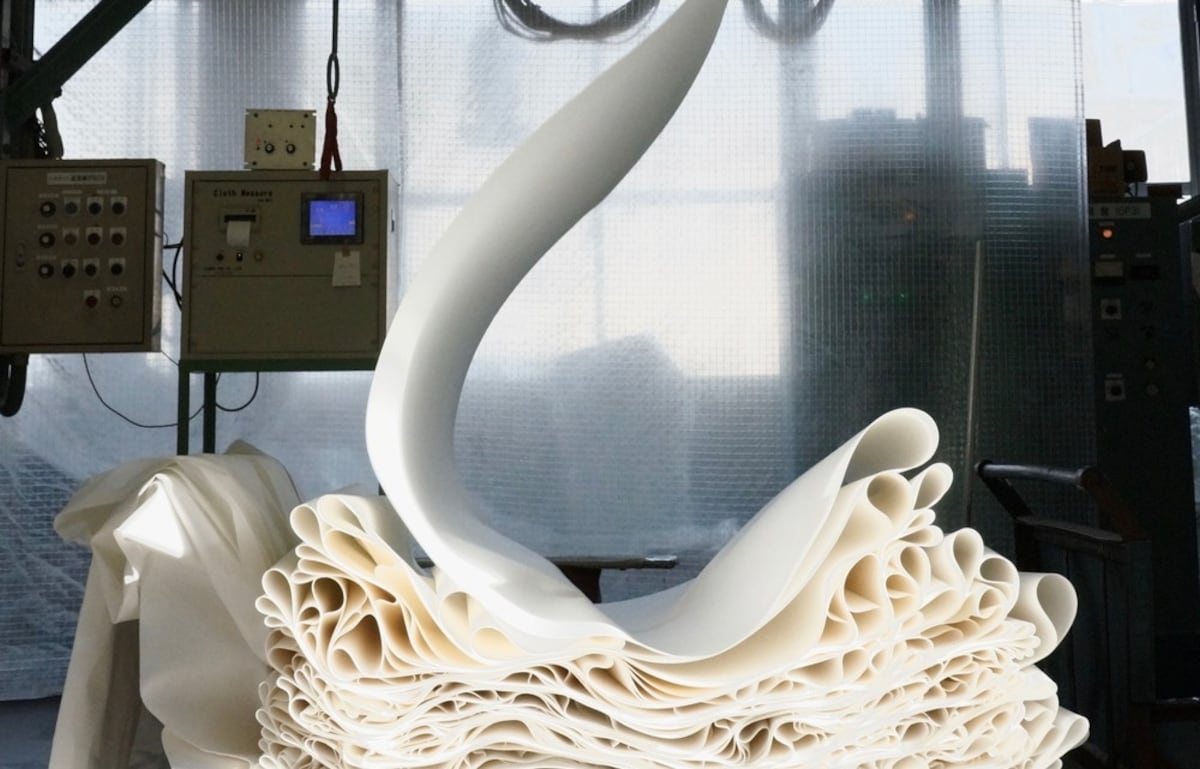
http://local-creators-market.com/fukuyama/
The second of our three featured Fukuyama makers is Sanyo Senko, a dye-works company that specializes in coloring cloth, rather than thread. It handles both continuous and batch dyeing in small and large lots, and particularly excels at discharge dyeing.
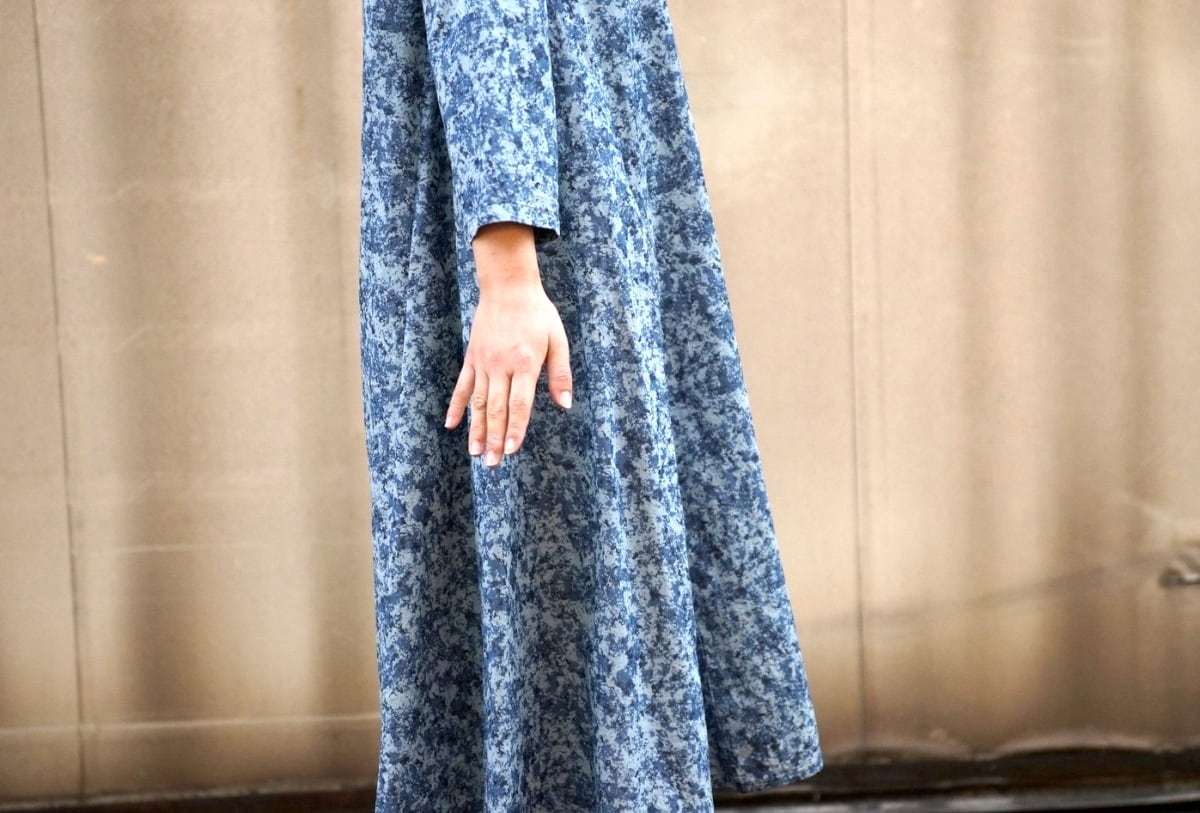
Known as bassen in Japan, discharge dyeing uses, in simple terms, a powerful bleach to subtract color from dyed fabrics in different patterns and complex designs. A laser-engraved design is run through a rotary printer from which the bleach or other chemical discharge liquid is dispensed, deactivating the color. The pattern emerges once the cloth is steamed and washed. Bassen is essentially ikat printing in its most modern guise.
Bassen offers a wide range of expression, and can be used to create complicated gradations. Central to the process is the practiced, careful eye of the artisan, who adjusts the printing by even a mere millimeter or so as necessary.
Shinohara Textile
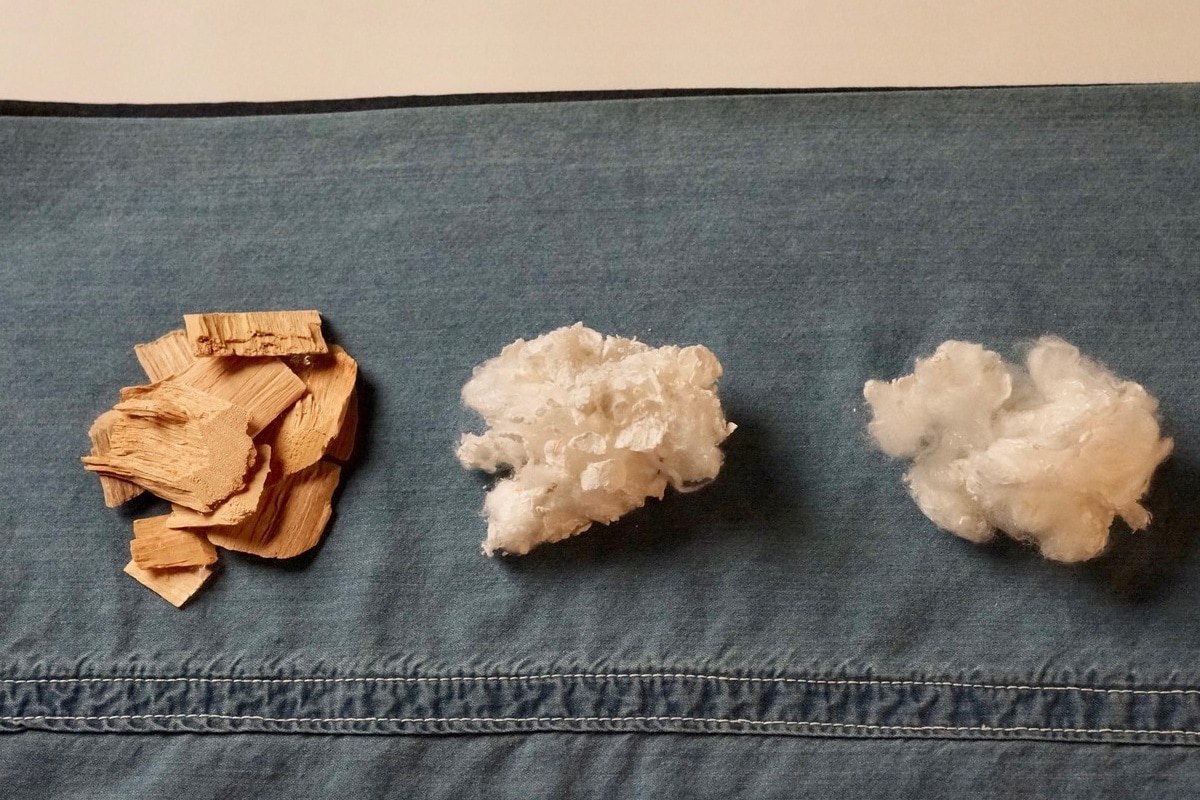
Shinohara Textile is the third great force behind Fukuyama denim, and its specialty is weaving. Thorough production control ensures that each thread is perfectly in place to make denim of the finest quality. Shinohara is perhaps best known for Tencel denim.
Tencel is made mostly from the cellulose pulp of eucalyptus plants. Natural, sustainable and breathable, the material is amazingly soft and smooth when used to make denim. Tencel denim is absorbent and well suited for wear by children and others with sensitive or delicate skin.
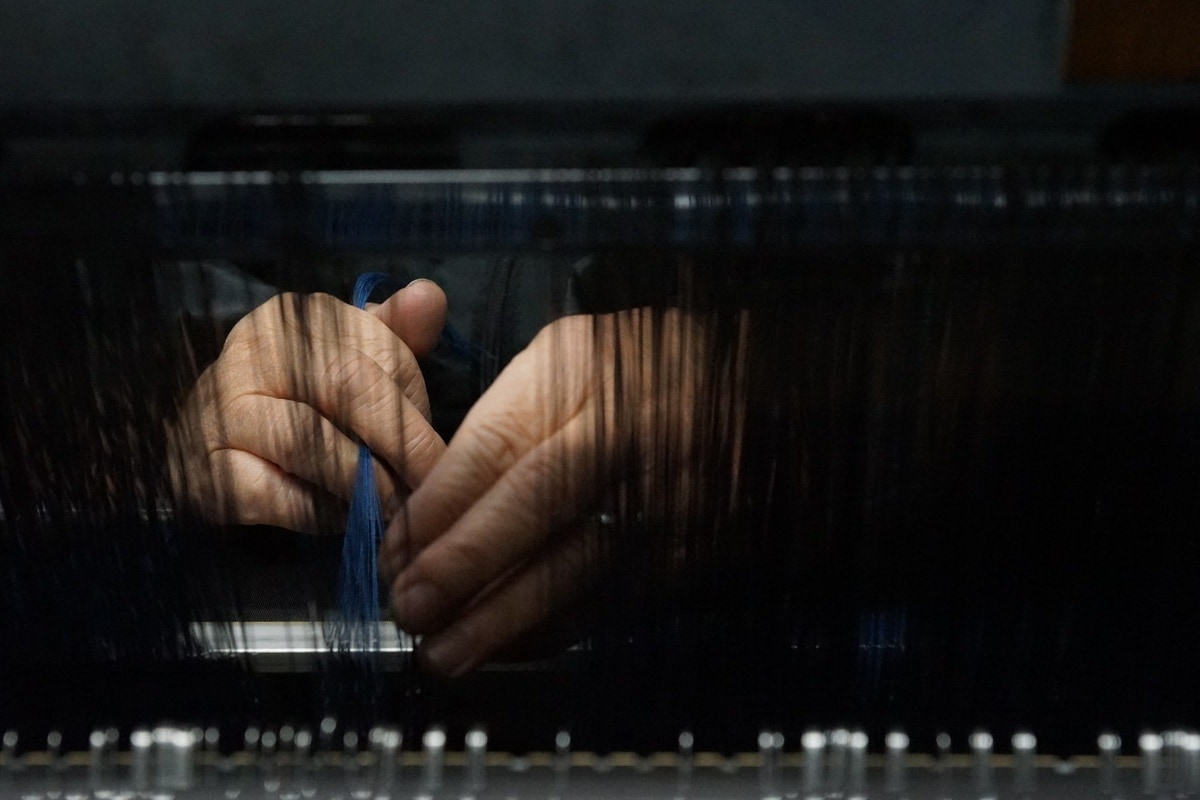
The weaving experts at Shinohara blend Tencel with cotton, linen, wool, polyester and other fibers. A Tencel/cotton blend looks like regular denim but is smooth to the touch. Combined with polyester, Tencel yields denim with a fine sheen and elasticity. Shinohara offers more than 100 varieties of denim weaves, more than you’ll find anywhere else in the world.
Try on a pair of jeans made of 100 percent Tencel and you may never want to wear anything else—they are that smooth and light. It’s a fabric that seems to reflect the tranquil blue waters of its home on the Inland Sea.


